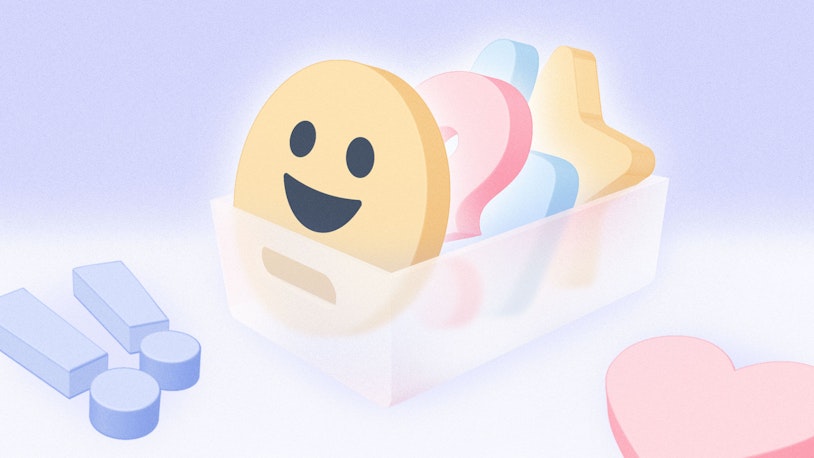For B2B SaaS companies, user adoption is one of the most important elements to get right in order to grow sustainably.
Appcues found that activation (when customers experience the core value of the product) is the most important pirate metric for SaaS growth. A 25% difference in activation increased MRR by 9.3% more than the same percentage increase in acquisition, and 3.3% more than the same percentage increase in retention.
This shows just how important user adoption is for your bottom line. Put simply: Improving user adoption means higher retention and lower churn rates. Let's take a look at six user adoption strategies SaaS companies can use to turn more trial users into customers and retain those customers long term.
What is user adoption?
User adoption is the process that new users go through to start working with your product and commit to using it long term. They’ve left an old product behind and have actively decided to adopt a new product or system that is better suited to their needs and more effective at helping them achieve their goals.
To improve user adoption, there are two core areas to consider:
Customer onboarding: Your onboarding process gets new users set up and using your product, aiming to deliver value as early as possible.
Change management: New users will only keep using your product if it provides a better experience and better results than their previous product or system (regardless of whether they used a competitor’s product, a spreadsheet, or a bunch of manual processes that were their old way of doing things).
Why is focusing on user adoption important?
Focusing on user adoption is important to ensure that your new users start and keep using your product and that they get value from your product for as long as they continue to use it.
A good user adoption process will:
Improve demo or trial conversion rates.
Encourage existing customers to grow their accounts.
Keep your customers engaged with your product.
From a business perspective, user adoption has a significant impact on several important metrics, including customer acquisition cost (CAC), customer lifetime value (CLTV), customer churn rate, and average revenue per user (ARPU).
Acquiring new customers is expensive: It costs five times as much to attract a new customer as to keep an existing one. But if you don’t have good user adoption processes in place, all that money the company spent to acquire those new customers will go to waste as you’ll fail to turn new users into long-term customers.
6 user adoption strategies for B2B SaaS businesses
Customer retention is essential for growing a SaaS business: You can’t scale up just from acquiring new customers. But to keep your customers coming back for more, you need to focus on the start of their journey: the adoption phase of the customer lifecycle.
Below you’ll find six strategies B2B SaaS companies can use to improve user adoption, to convert trial users into customers, and to encourage existing customers to expand their accounts as they grow. These strategies all help drive usage, adoption, and engagement from the very first time they use your product.
1. Identify your activation criteria
Activation criteria is a specific task or set of tasks that a new user completes to start getting value from your product. For example:
Twitter: Follow 30 people and have some of them follow you back.
Uber: Complete your first ride.
Gmail: Send your first email.
Your activation criteria are things customers do that improve the likelihood that they’ll come back into your product a second, third, and fourth time. Guiding a new user to complete these tasks is crucial for driving long-term user adoption, but you can’t do that if you don’t know what the criteria are for your product.
Activation criteria can’t just be to start using your product. There should be a specific task that delivers value to the user and helps them understand why they should continue using it. If new users can’t quickly understand the value of your product, they won’t stick around for long.
2. Get to the heart of why customers use your product
Why do customers use your product? To answer this, you’ll need to work with your sales team to understand what the real-life challenges your prospects are dealing with that prompt them to look for a solution like yours. This will help you understand their motivations and goals — both of which help when you’re looking to improve user adoption.
To really get to the heart of why customers start and keep using your product, you can look at your current customers as well as your prospects.
Take a look at your best customers — the power users or your most vocal advocates. Look at common trends in how they use your product, how they talk about it, and what they share in product feedback. Even better, speak to them directly.
Understanding prospects’ goals and customers’ data will help you understand how your users perceive the value of your product and how it can benefit them.
Understanding why people use your product is the first step to improving user adoption, as this will help you shape your customers’ first use, their onboarding experience, and how you communicate with them during their subscription.
3. Offer a trial period
A free (or low-cost) trial period is a great way to get new users in and using your product. For example, Ahrefs offers a 7-day trial for $7, but they encourage potential trial users not to start a trial until they understand how the product can help their business.
Tim Soulo, Head of Marketing at Ahrefs, says: “My theory is that people don’t sign up for your tool and then learn how to use it. My theory is that people first learn how to use your tools, and they sign up because they know how to use your tool.”
A trial gives potential users a chance to get to know how to use your product before they commit to a monthly or annual subscription. And while offering a free (or, in the case of Ahrefs, paid) trial may not work for all SaaS companies, it might be worth considering if you’re struggling with low user adoption rates.
4. Optimize your customer onboarding process
Customer onboarding is the process that new users go through to start using your product. It covers the early stages of the customer journey, from initial sign up to product activation and first use. Your onboarding process aims to deliver value to your customer as early as possible and is crucial for driving long-term user adoption.
There are six important steps to take your new users through as part of your customer onboarding process:
Your sign-up flow.
A welcome email.
First log-in.
Integrations and inviting other users.
A product walkthrough.
Follow-up emails.
The ultimate goal of customer onboarding is to get your customers to come back to your product, which is why it’s such an important user adoption strategy.
Take time to analyze your onboarding process: Are there any areas of friction you can identify? Optimizing your customer onboarding process can help improve user adoption rates by helping your newest users achieve their goals with your product early on so they experience its tangible benefits.
5. Analyze feature and product usage
When you think about user adoption, many companies focus on that initial onboarding phase, getting customers to start using their product. But user adoption is a continuous challenge — you want customers to repeatedly use your product long term — which is why analyzing product usage data is an important user adoption strategy.
An important concept to keep in mind is the idea of "at-risk" users. A clear sign of this is when a user gradually loses interest in your product: They don’t log in as much as they used to, they don’t use as many features as they once did, or only one user on the account ever logs in.
The amount of time they spend using your product — and at the same time, the amount of value they get from it — declines, which can be an early indicator that they’re at risk of churning.
It’s difficult to re-engage a customer once they’ve stopped using your product, so analyzing product usage can help you identify users who’ve successfully adopted your product and those who may need some extra support to fully get started.
6. Market to your existing customers (not just prospects)
Investing in customer marketing is so important, both to get your newest customers to start using your product, but also to encourage existing customers to add more users to their account.
Most companies spend their marketing budgets acquiring new customers. But just like you nurture new leads, you need to nurture your customer relationships, too, to keep them engaged with your product and your business and to make it more likely they’ll renew their contract for another year.
There are plenty of opportunities to market to existing customers, such as:
New feature announcements.
Product updates.
When you notice a drop-off in their product usage or activity.
The aim of your customer marketing is to keep your product top-of-mind and entice your users back into your product. Get them excited about a new feature or prompt them to continue with their onboarding process to get set up for success.
There will be some crossover between customer marketing activities and your onboarding process: For example, follow-up emails during onboarding might fall under the umbrella of customer marketing.
But customer marketing shouldn’t stop when your onboarding stops; you can market to your existing users year-round to drive continued product adoption and regular usage.
Make user adoption an ongoing process
User adoption is often thought of as a one-and-done process, similar to product set-up or onboarding. But for growing B2B SaaS companies, it’s an ongoing journey.
Your new user signs up and starts using your product, then adopts it as an important part of their tech stack. Then as their account grows, they add more users who also need to fully adopt your product to get the most value from your service and their account.
If your user adoption rates are low, you’re essentially throwing away a huge chunk of your sales and marketing budgets. Instead, use the six strategies above to boost retention and expansion revenue by keeping customers engaged long term and giving them more reasons to expand their accounts.









